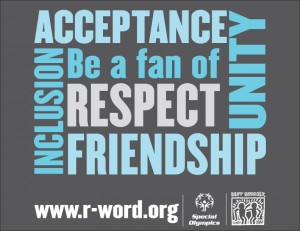I love to coach. As I shared in my values post, I get practically giddy at the thought of nurturing and guiding folks safely and smoothly through change — transitions and transformations.
Over the course of the next several Tuesdays, I’ll share one area of my practice that thrills me more than just about anything — coaching individuals with disabilities and their families as they transition from one life stage to another. Please note that while I’ll be describing a coaching scenario that is very similar to several families that I’ve worked with, it is an amalgamation of those conversations and is not based on any one family.
Coaching, by its very nature, is a highly individualized process involving the establishment of trust, the co-creation of goals, and ongoing support throughout the relationship. It is important when working with individuals and teams — but it is never more critical than when working with a family. Trust, co-creation, and support become trickier as we add individuals to the table, but I’ve spent my entire adult life gathering tools and skills that support individuals in assessing their current reality, establishing goals – both stretch and very realistic in nature – and enrolling their community in support of those objectives.
The Scenario
In this scenario, a family is interested in figuring out the process of transitioning their son from high school to a really, real adult life as part of his community. The son, Jon, expects to graduate at age 22 with the current class of juniors. He has been diagnosed with an intellectual disability and is receiving special education services at his local high school.
His parents are divorced but civil. His father, Dan, expects him to get a job and live on his own or with a couple of roommates. His mother, Kate, does not see him ever leaving home – there are way too many things that can go wrong. Jon’s circle of support includes extended family, classmates, several favorite teachers, people at church, and family friends.
The state where they live currently has a waiting list of about 8000 people with intellectual disabilities hoping for services and supports. With recent budget cuts, only the most urgent needs are addressed by the state system when enrolling new individuals into services. Having two living parents puts Jon near the bottom of the list of people waiting.
The parents of a classmate at school are working with me to do similar planning for their daughter. They shared my name with Kate while attending a transition workshop offered by the state’s Parent Training Institute. Kate called to find out whether I could help them figure out what their son will do after high school.
Establishing the Coaching Relationship
As Kate was referred to me by another family who is in a similar situation and who found the coaching process helpful, I’m already at somewhat of an advantage over a coach who is called from an advertisement. Kate, Jon, and Dan already have some idea of what I’m able to do, although they may not have a clear understanding of my overall role in Jon’s transition.
Even so, the first order of business is to establish trust while outlining what coaching can and cannot do for this family.
A partnership requires that coaches earn the trust of people they work with, so that can provide the right amounts of challenge and support throughout the process. — David B. Peterson
I rely heavily on a humanistic approach as a foundation of my practice and incorporate other tools and theories when needed. Walking this family through the transition planning necessary to move Jon from high school into an interdependent adult life, while paying attention to his hopes and fears and those of his parents, and helping them to build a strong circle of support will necessarily direct some of the content and most of the goals of the coaching relationship. How I guide them through this is steeped in my values, my training, and my solid belief that everyone deserves to be happy and included.
Because they do.
In Part II, I’ll share more about my role in working with Jon, Kate and Dan. I’ll also talk some about what it means to be “humanistic” in coaching… and I’ll hint a bit at how we’re going to get everyone on the same page and pointing forward.
For folks who like to know more, here are the references from this post:
Brouwer, P. J. (1964). The power to see ourselves. Harvard Business Review, 42(6), 156-165.
Helen Sanderson and Associates. (2007). Person centred thinking. Liberty, Missouri: HSA, USA.
Pearpoint, J., O’Brien, J., & Forest, M. (1993). PATH: Planning possible positive futures. Inclusion Press: Toronto.
Peterson, D. (1996). Executive coaching at work: The art of one-on-one change. Consulting Psychology Journal: Practice and Research, 48(2), 78-86.
Stober, D. R. & Grant, A. M. (eds.) (2006). Evidence based coaching handbook: Putting the best practices to work for your clients. Hoboken, NJ: John Wiley & Sons, Inc.



your thoughts